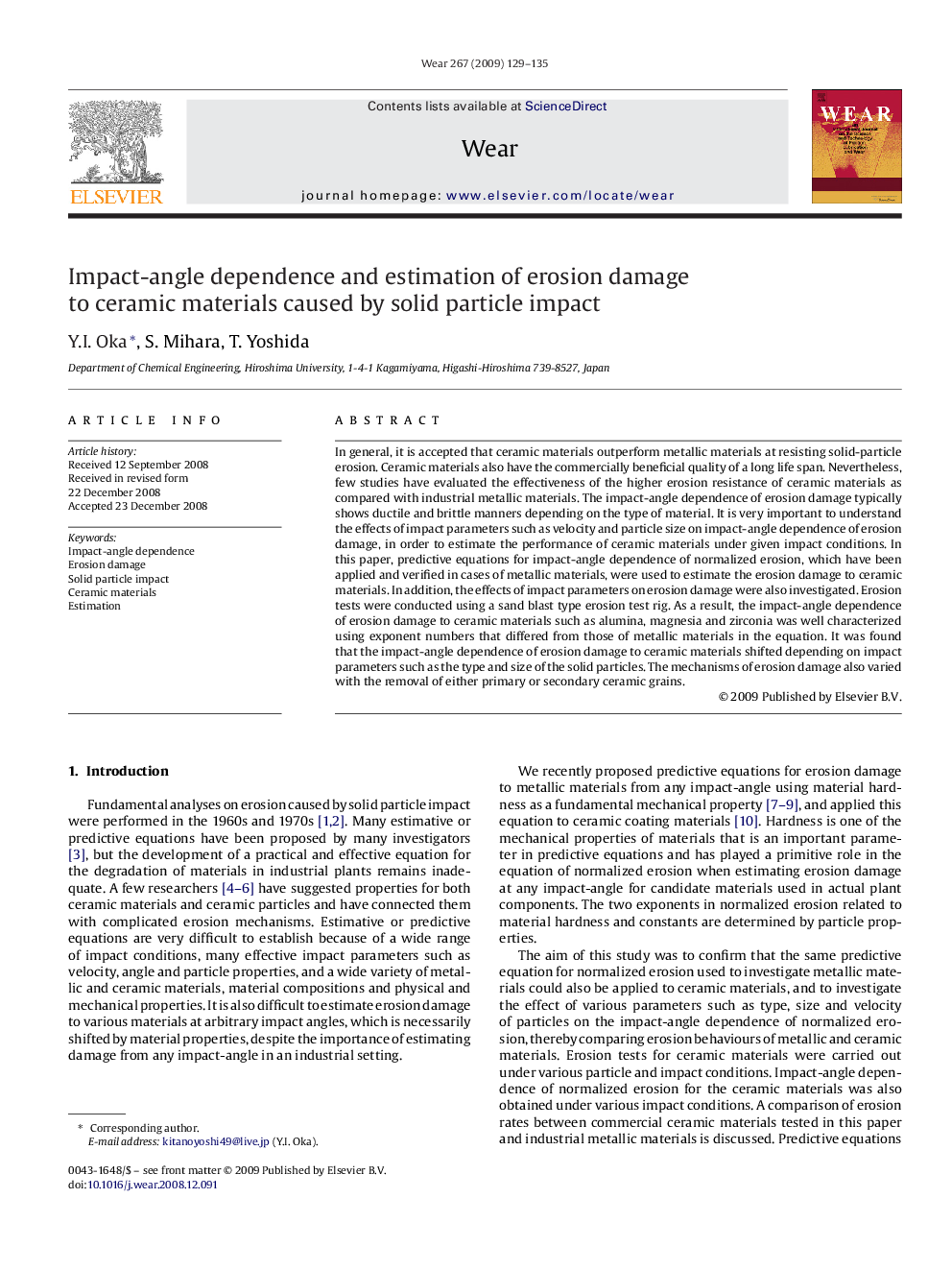| Article ID | Journal | Published Year | Pages | File Type |
|---|---|---|---|---|
| 618713 | Wear | 2009 | 7 Pages |
In general, it is accepted that ceramic materials outperform metallic materials at resisting solid-particle erosion. Ceramic materials also have the commercially beneficial quality of a long life span. Nevertheless, few studies have evaluated the effectiveness of the higher erosion resistance of ceramic materials as compared with industrial metallic materials. The impact-angle dependence of erosion damage typically shows ductile and brittle manners depending on the type of material. It is very important to understand the effects of impact parameters such as velocity and particle size on impact-angle dependence of erosion damage, in order to estimate the performance of ceramic materials under given impact conditions. In this paper, predictive equations for impact-angle dependence of normalized erosion, which have been applied and verified in cases of metallic materials, were used to estimate the erosion damage to ceramic materials. In addition, the effects of impact parameters on erosion damage were also investigated. Erosion tests were conducted using a sand blast type erosion test rig. As a result, the impact-angle dependence of erosion damage to ceramic materials such as alumina, magnesia and zirconia was well characterized using exponent numbers that differed from those of metallic materials in the equation. It was found that the impact-angle dependence of erosion damage to ceramic materials shifted depending on impact parameters such as the type and size of the solid particles. The mechanisms of erosion damage also varied with the removal of either primary or secondary ceramic grains.
